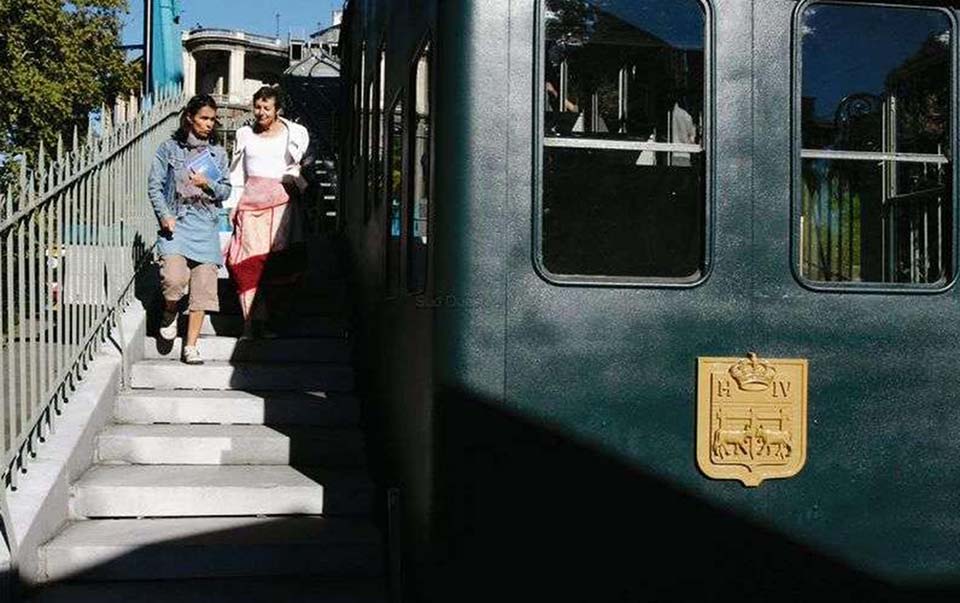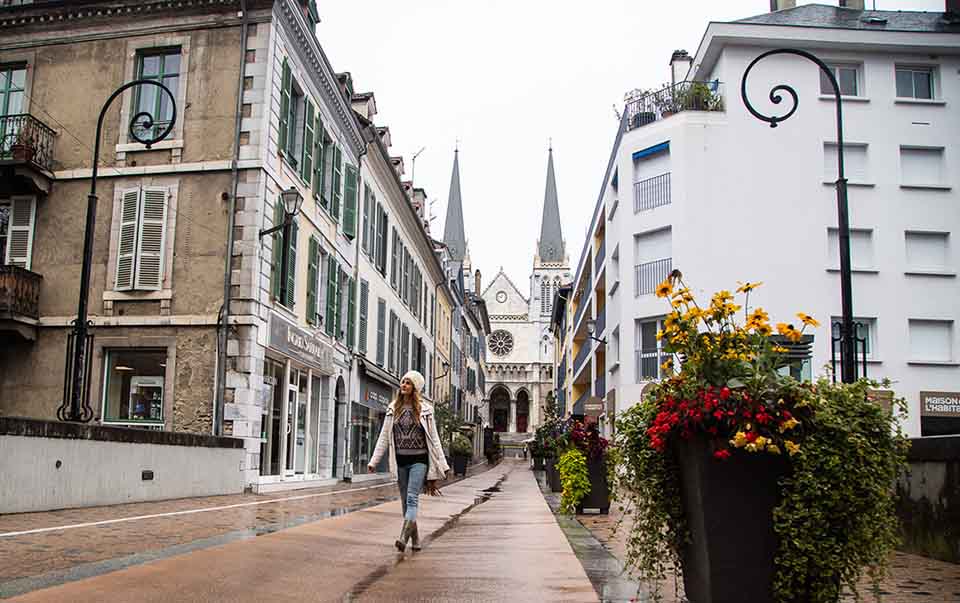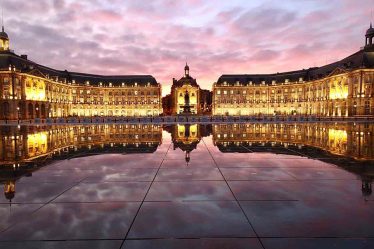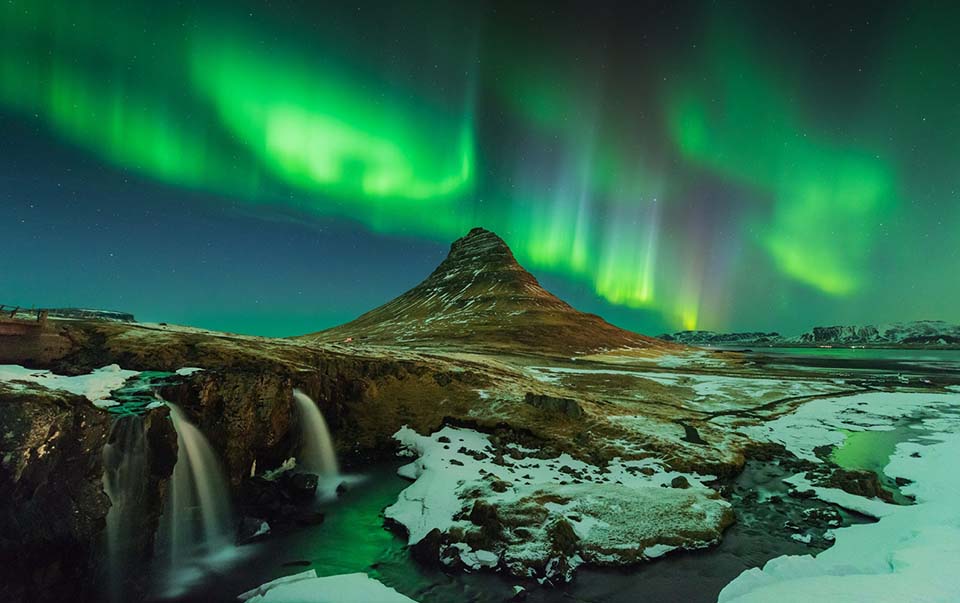
1. Arrival in Pau: The Mountain City Wrapped in Clouds
I arrived in Pau late in the afternoon, just as the last of the golden sunlight began to slip behind the jagged silhouettes of the Pyrenees. The air was clear and unusually crisp, carrying with it the scent of old stone buildings and freshly turned earth from the surrounding hillsides. As my train pulled into the Gare de Pau, I caught my first glimpse of the city perched above the Gave de Pau river like a quiet sentinel, its pastel facades glowing in the low light.
Pau is not a city that demands attention; it invites curiosity. Nestled on a natural terrace, it watches over the valley below with the kind of calm that only centuries of history can instill. I had read that it was once a favorite retreat for European aristocrats and British winter vacationers, and within minutes of stepping off the platform, I could see why. The air, the height, the light—everything in Pau felt slightly removed from the rush of the world, and that distance made the city all the more compelling.
2. The First Steps: Through the Lower Town
I wheeled my small suitcase through the lower part of town, following the signs for the funiculaire. Along the way, I passed quiet squares, children playing in fountains, and a few older locals seated outside corner cafés, chatting in the soft southern French accent that rolls off the tongue like warm honey. The streets here were narrow and mostly cobbled, with storefronts that had clearly resisted modernization. There was a bookshop with faded blue shutters, a florist where blooms spilled onto the pavement in shades of apricot and violet, and a tiny bakery whose window was misted over from fresh pastries cooling just inside.
It would have been easy to stop right there and get lost in the quiet rhythm of the lower town, but I had a goal: the funicular. The idea of rising up the hill and seeing the city unfold from above had been circling in my mind for weeks. I wanted to understand how Pau had earned its reputation as one of the most scenic cities in France—not from postcards or photos, but with my own eyes.
3. Boarding the Funiculaire de Pau

The entrance to the funicular was almost hidden—just a modest set of glass doors set into a stone wall beneath the cliffs that hold up the old city. I stepped inside and found myself alone in a small station that felt more like a historical exhibit than a modern transport hub. There was a certain elegance in its simplicity. A single track, a wooden car polished smooth by generations of use, and above all, silence.
The funiculaire is free to ride, which somehow adds to its charm. I didn’t need a ticket, only a bit of patience. When the car arrived, I stepped inside and sat near the front window. The doors closed with a soft hiss, and slowly, gently, we began to rise.
The journey was short—barely two minutes—but each second offered a new perspective. I watched the rooftops of the lower town shrink, the trees rush past, and the sky stretch out wider and wider. The incline wasn’t steep, but it was enough to feel that I was leaving one world and entering another. By the time we reached the top, I felt like I had been lifted not just physically but emotionally, as if something in me had expanded with the view.
4. Boulevard des Pyrénées: A Balcony Over the Pyrenees
The upper station opened onto the Boulevard des Pyrénées, one of the most beautiful promenades I have ever walked. On one side were the facades of 19th-century buildings, graceful and understated, their balconies dripping with geraniums. On the other side was an endless sky, a sweeping view of the valley and the mountains that stole my breath entirely.
From this vantage point, the Pyrenees didn’t feel distant—they felt monumental. Sharp peaks layered behind each other in gradients of gray and blue, some still topped with snow even in late spring. Below, the river wound its way through dense forests and emerald fields, catching the light in small glints like scattered coins.
I stood for a long time at the railing, leaning forward slightly, not wanting to miss a single detail. Behind me, people were walking their dogs, riding bikes, or sitting on benches reading the newspaper. A street musician played an accordion, his music curling through the air like smoke. The entire boulevard felt like a suspended moment in time—a bridge between the earth and sky.
5. Exploring the Heights: Hidden Corners and Grand Vistas
After pulling myself away from the view, I wandered into the upper city. Here, the streets opened up into small squares, most of them anchored by fountains or bronze statues of figures I didn’t immediately recognize. I ducked into the courtyard of the Château de Pau, a structure that manages to be both regal and rugged, with its uneven stonework and looming towers. Henry IV was born here, and whether or not one is interested in royal history, it’s impossible not to be moved by the quiet grandeur of the place.

I didn’t take a guided tour. Instead, I walked slowly through the grounds, listening to the sound of my footsteps echo in the archways, letting the old walls speak for themselves. Behind the château, there was a garden that overlooked the valley—a more secluded spot than the boulevard, but with just as striking a view.
From there, I wandered without a map. I passed hidden courtyards shaded by fig trees, local épiceries displaying pyramids of cheeses and sausages in their windows, and terraces where couples sat drinking chilled white wine from the nearby Jurançon vineyards. Every corner of Pau felt deliberate but unpretentious, elegant without showiness. It was the kind of place that seemed content to exist, whether or not anyone noticed it.
6. Late Afternoon Light: Watching the City Glow
By late afternoon, the sunlight had begun to soften again, the golden hour returning with slow, luxurious steps. I made my way back to the boulevard, stopping this time at a small café with outdoor seating that faced the mountains. I ordered a glass of wine and a plate of thinly sliced duck breast, served with a dollop of sweet onion compote and a side of garlicky sautéed potatoes.
As I ate, the sky turned from pale blue to a deep orange, then to the soft pink of a seashell. The mountains, now shrouded in shadow, seemed even more immense, more ancient. Lights began to appear in the valley below—farmhouses, distant villages, the occasional car crossing the river.
There was no rush. I sat there until the waiter brought a small lantern for my table and the boulevard quieted down for the evening. The city, which had opened itself so generously throughout the day, seemed to be drawing inward again, folding back into the softness of night.
7. Descent into Stillness
Eventually, I returned to the funicular for the ride back down. This time, the city was lit from below, streetlamps casting soft halos on the cobblestones, windows glowing like fireflies. The descent felt different—more intimate, almost private. I was no longer discovering Pau; I was carrying it with me.
As the cabin moved down the track, I thought about how rare it is to find a place that offers both awe and peace in equal measure. Pau doesn’t try to impress. It simply reveals itself, layer by layer, to those who take the time to look.
When the doors opened at the lower station, I stepped out slowly, reluctant to leave the spell that had been cast over me. The night was still warm. The city was quiet. And somewhere above, the mountains kept their watch, unchanged and eternal.


